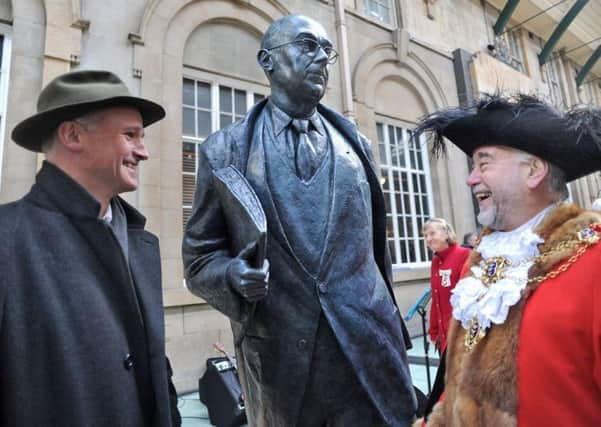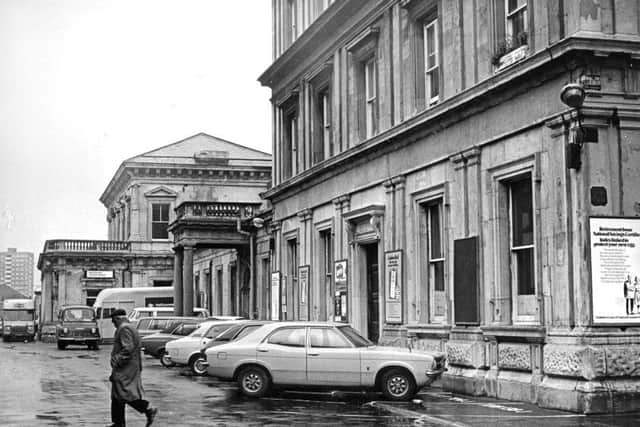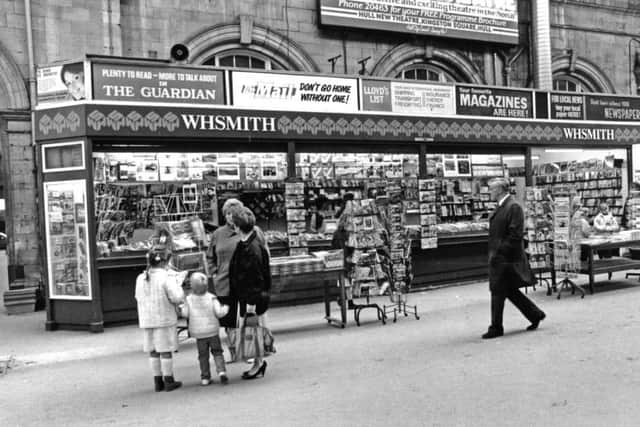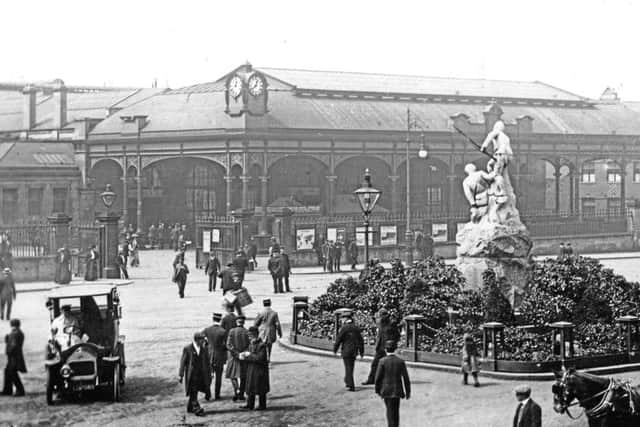Nostalgia on Tuesday. Poetry in motion


Hull’s first railway station was Manor House Street, opened in 1840 as the terminus station of the Hull and Selby Railway. Situated on a site of around five acres, the station was built adjacent to Humber Dock and Kingston Street.
On July 3, 1840, the Hull Packet newspaper reported: “Wednesday last, the day fixed on for the opening [of the Hull and Selby Railway], proved most unpropitious, the rain having commenced about six in the morning and continuing without intermission until mid-day. Notwithstanding the weather, the rush to obtain admission to the entrance of the terminus was very great and the anxiety to be sheltered in the first and second class carriages intense.”
Advertisement
Hide AdAdvertisement
Hide AdThe main two-storey station frontage, facing Humber Dock, was described as a spacious and neat building of white brick and stone. It was called the ‘Railway Office’ and included railway company offices, entrance hall as well as waiting rooms for passengers. Public services on the Hull and Selby line began on July 2, 1840.


By 1847, Manor House Street station had become more appropriate for goods than passengers and a new station with hotel was planned to the west. Entrusted with the designs was George Townsend Andrews, who had been responsible for many other railway station plans within Yorkshire. The new station, acquiring the name Paragon station, from its close proximity to Paragon Street, was to become a terminus for a number of lines.
Initially, work on the station was begun first and the hotel a little later. Built of stone from which the Houses of Parliament were erected, the station opened in 1848 though was not completely finished until a short time afterwards. The hotel building was formally opened in 1851.
Both the station and hotel were GT Andrews’s last major architectural commissions and resembled the Italian Renaissance style. Critics thought the scale of the buildings too ambitious; the station being the largest built in England at the time. The main station building faced Anlaby Road and featured a two- storey central booking hall, entered via a small porte-cochère. There was also a parcels office, station master’s house and first, second and third class waiting rooms.
Advertisement
Hide AdAdvertisement
Hide AdIt was reported that the station was opened on Monday, May 8, 1848 “without ceremony” but “many of the townspeople assembled to see the first station start. The platforms are equal in accommodation to those of Derby and York...these works are a great addition to the conveniences of the town”.


In contrast to the station’s low-key opening, the hotel threw open its doors on November 6, 1851, with a grand ceremony. “Seldom has a more brilliant dinner-party assembled in the town of Hull than that which sat down at the New Railway Hotel in the town” stated one newspaper. The hotel comprised 120 apartments, which included extensive coffee and commercial rooms, a cigar divan, separate parlours, drawing and sitting rooms with numerous suites for families, and a billiard room.
There were further festivities at the hotel in October, 1854, when Queen Victoria stayed there. The building was made available to Hull Corporation by the railway company for the formal visit and the Queen stayed there one night, her entourage occupying the entire first floor. After the visit, Royal was added to the hotel name and eventually it became just The Royal Hotel.
Interestingly, according to the BBC website Legacies, most of the European emigrants entering Hull travelled via Paragon station and from there moved on to Liverpool via Leeds, Huddersfield and Stalybridge. “The train tickets were part of a package that included the steamship ticket to Hull, a train ticket to Liverpool and then the steamship ticket to their final destination – mainly America,” said the website.
Advertisement
Hide AdAdvertisement
Hide AdUse of Paragon station declined when the Riverside Quay railway station opened in May, 1907. This enabled emigrants to walk down the gangway of their ships and straight on to the waiting emigrant trains that could reach Liverpool within four hours.


Significant alterations were made to Paragon station between 1903-1905 when under control of the North Eastern Railway. Whilst the proposals were authorised in 1897, a start was not made for several years due the acquisition and clearance of a number of properties. Among the work was the creation of a large cab shelter; the addition of a five Art Nouveau kiosks on the concourse; the platform roofs were extended and a new frontage opening on to Paragon Square was built.
As a result of the privatisation of British Transport Hotels during 1983, the Royal Station Hotel passed from railway ownership into private ownership. A fire seven years later severely damaged the hotel but it was rebuilt and still offers style and comfort to travellers.
A unique addition to the listed station, now titled Hull Paragon Interchange, was the installation of a £65,000 bronze statue of Hull poet, Philip Larkin. Sculpted by Martin Jennings the work was unveiled on the Interchange’s concourse on December 2, 2010, marking the 25th anniversary of the poet’s death.
A year later, an additional five slate roundels containing inscriptions of Larkin’s poems were incorporated into the floor around the statue.